Book Preview: Kolonie: The Forgotten Empire
Kolonie: The Forgotten Empire is the next art book from Design Studio Press that's going to come out in Oct 2011.
The book's 160 pages, available in paperback and hardcover. Interestingly, or shockingly, the hardcover's retail price is US $70 compared to $30 for paperback (both before Amazon discount). I wonder if that's a limited edition or something.
I've already seen the book (e-artbook) and it looks great. The premise, in short, is about a new planet Kolonie which was found, industrialised for its oil, and then abandoned when oil was replaced by other energy sources. This is a concept art book based on that premise.
The premise is simple but the exciting part comes from how the two artists, Patrick Hanenberger and Christian Schellewald, visualise that new world.
The concept art is on the deserted areas, the cities, oil pumping plants, spaceports, and environments. It reminds me of photos I see online on deserted places. It's a dystopia where there are still people living, so there are some character designs as well. There are also designs for taxis, race cars (hobbies of people there), the non-drilling areas and other interesting stuff.
It's must be pretty fun coming up with the various concepts.
This book should appeal to concept artists.
I'll do a flip through when I get the physical book.
-
All pictures and book description below are from Design Studio Press:
In the future, a new land on the edges of the universe, Kolonie, has been found with untapped sources of oil. Colonization follows immediately. Watch the story and the stunning visuals unfold for this new world through the expert eyes, hands and minds of artists Patrick Hanenberger and Christian Schellewald.
The Kolonie was a fairly unimportant world at the fringes of the known universe. Although its climate and living conditions make it a habitable environment, the immense distance to the central worlds left it provincial and there were no serious plans for any form of colonization.
When the first oilfields were discovered, an enormous rush to the Kolonie started immediately. At that time space travel, and any other form of transportation was still completely dependent upon oil. Millions of colonists left their worlds to find their fortunes on the Kolonie. A new class of spaceships was constructed to ferry settlers and supplies to the distant world and bring back oil and oil products in vast quantities.
Kapitol, the main city on the Kolonie grew into a huge metropole and for more than a decade its spaceport was one of the busiest of the entire universe. When oil was finally replaced by other more efficient energy sources, importing it from the Kolonie to the main planet ceased to be profitable.
The large oil corporations pulled out and shipping to the Kolonie stopped entirely within a short amount of time. Occasionally a government ship from the central world lands on the Kolonie to bring new government troops and officials, spare parts and new technology and sometimes a few passengers.
Leaving the Kolonie is difficult and very costly and far too many people are stranded and long to go back to their less remote home planets. But there are still a few adventurers and fortune seekers who manage to travel to the Kolonie, which still offers many opportunities.
This book is the first chapter in introducing the visually rich world of the Kolonie as well as its inhabitants and technology.
About the authors
Patrick Hanenberger was born in Melbourne Australia and raised in Wiesbaden, Germany. He moved to the United States to study Industrial and Graphic Design at the University of Michigan. He continued on to earn a second degree in Transportation Design from Art Center College of Design in Pasadena. Today he works as a production designer in the animation industry, concept artist for live action films and part-time college instructor. Patrick currently resides in Los Angeles. He spends much of his free time drawing with Christian or walking around town with a coffee, his girlfriend Margaret and Rufus the dog…
Christian Schellewald was born in Essen, Germany, where he also went to University to study visual communication, with an accent on illustration, graphic design and film design. He worked as an illustrator for advertising agencies and magazines in Germany before starting to work as a layout artist for an animation studio in London, which eventually led to a job as an art director for an animation company in the US. Christian lives with his wife Katrin and daughter Karla in Los Angeles.

The different areas on one of the continents of Kolonie.
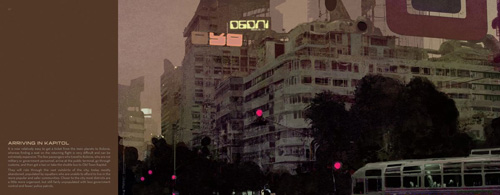
This is the city Kapitol.
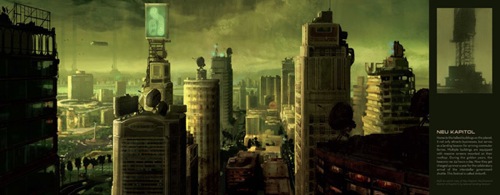
Neu Kapitol.

Concepts of city buildings.


Character designs and local scenes.
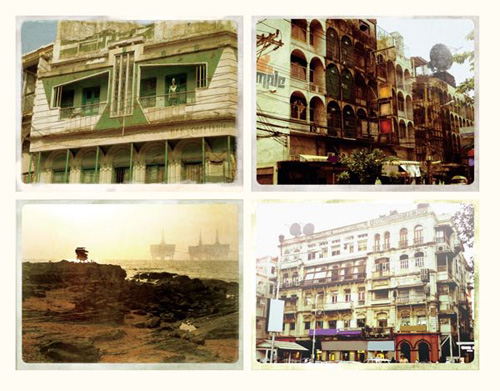
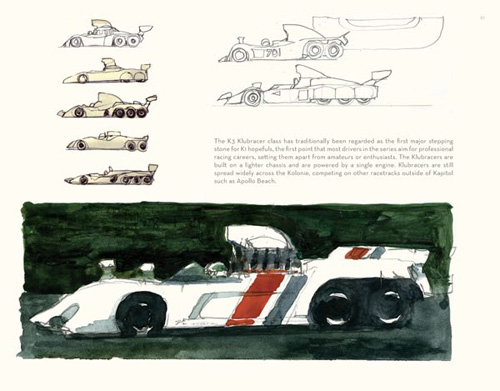
People on the planet loves racing.
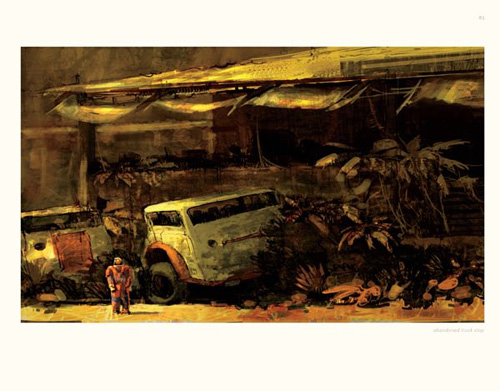
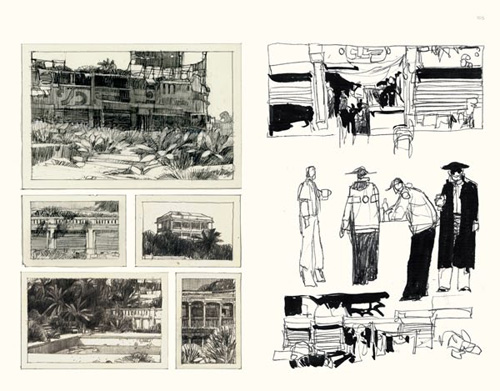

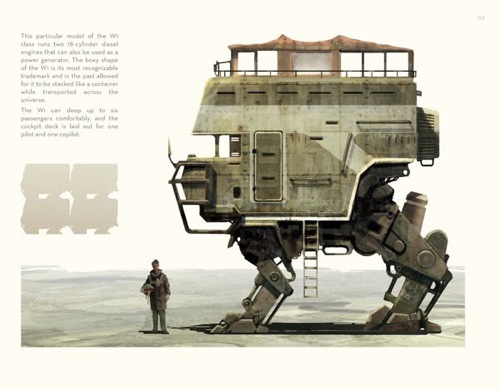
A walker that was once used for construction.

Visit Amazon to check out more reviews.
If you buy from the links, I get a little commission that helps me get more books to feature.
The hardcover is available at:
Amazon.com | Amazon.ca | Amazon.co.uk | Amazon.de | Amazon.fr | Amazon.it | Amazon.es | Amazon.co.jp
This paperback is available at:
Amazon.com | Amazon.ca | Amazon.co.uk | Amazon.de | Amazon.fr | Amazon.it | Amazon.es | Amazon.co.jp | Amazon.cn
Comments
Looks cool. But a bit
Looks cool. But a bit expensive. There's other books on my radar. Maybe when you post other pages I'll consider. But, thank you Parka nonetheless. If it was $20 cheaper I might buy it.
@David The paperback is
In reply to Looks cool. But a bit by David (not verified)
@David
The paperback is cheaper.
The prices I listed above are retail prices, before Amazon discount which is typically around 34%.
Are we looking at digital art
Are we looking at digital art throughout or is there actually some watercolor work up there?
@Vainamoinen I can't really
In reply to Are we looking at digital art by Vainamoinen (not verified)
@Vainamoinen
I can't really tell from the low resolution images I have. I would guess it's mostly digital art.
Sounds alot like Steambot's
Sounds alot like Steambot's "Exodyssey". Putting this one on my list. :)
What is an e-artbook? Can I
What is an e-artbook? Can I see this book the same way or did the publisher send you and advance file/copy?
It's an advance copy for
In reply to What is an e-artbook? Can I by Anonymous (not verified)
It's an advance copy for review purposes only.
The concept behind the art
The concept behind the art book sounds very exciting. I really enjoy "dystopian" theme artbook such as this.
Thanks, Parka, for introducing this title.
Since the description mention that "This book is the first chapter in introducing the visually rich world of the Kolonie", does that mean there will be future sequels?
Cant wait!
Are there other books similar
Are there other books similar to this?
I know you have reviewed Exodyssey which is similar right?
Exodyssey, The Art of
In reply to Are there other books similar by Anonymous (not verified)
Love the art Love to see this
Love the art
Love to see this style taught in schools




Add new comment